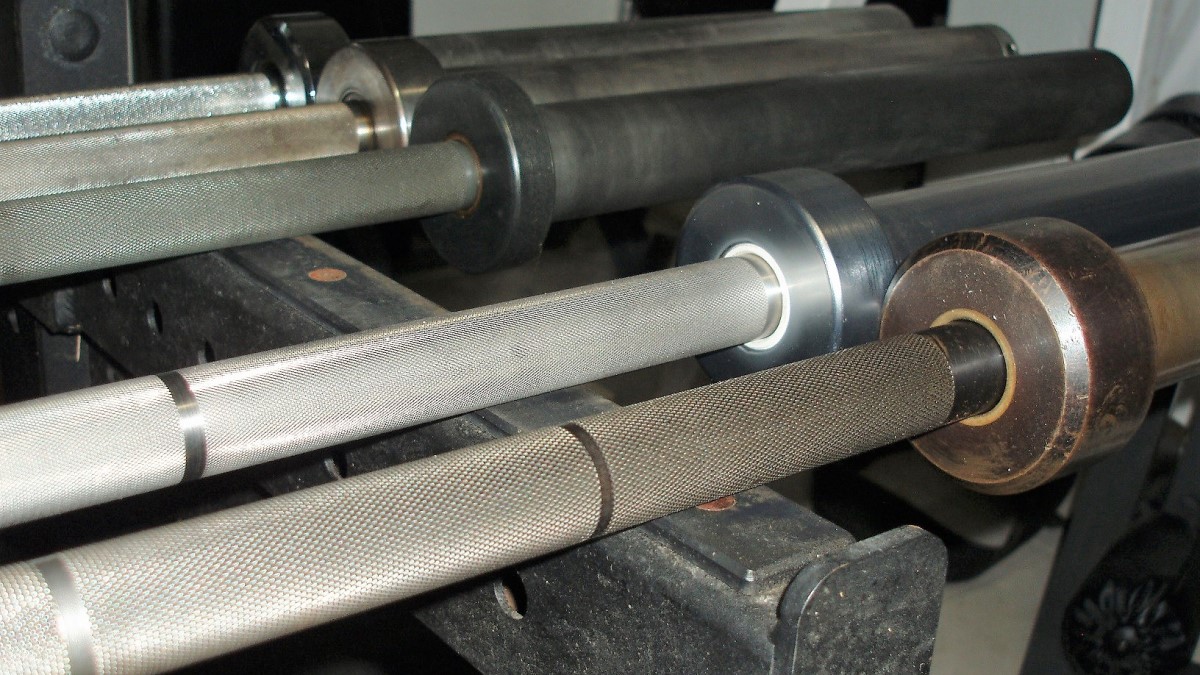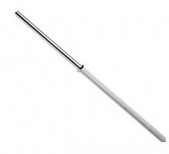The bar is almost always included in the total weight you’re counting for the lift. The only exceptions are for machine exercises, where the bar weight is unknowable or counter-balanced, and maybe landmine exercises where you’re only lifting some portion of the total bar weight.
Table of Contents
Why It’s Important
Knowing how much it weighs is important so that you know how much you’re actually lifting. If you’re always using the same bar and always will, it doesn’t matter much, because you can record it the same every time. But if you use more than one bar, or work out at different locations, or might at some point in the future, it’s valuable to know the weight of your olympic bar.
Ideal: Weigh It
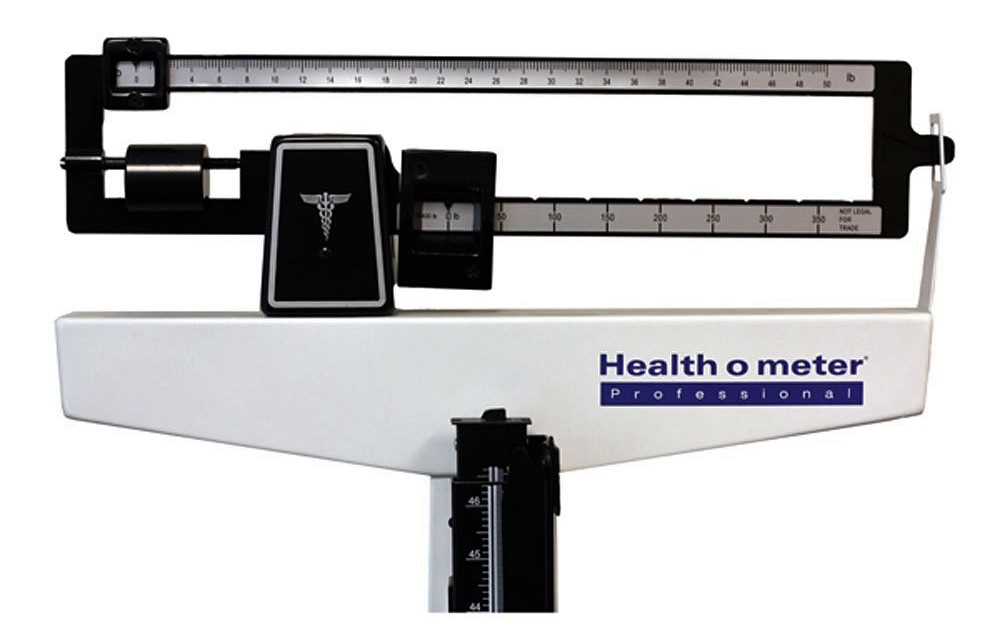
First of all, one reliable way of determining the weight is with a gym scale or even just a bathroom scale. Just weigh it, and there’s your answer.
Sometimes that isn’t practical, such as if you work out at a commercial gym. You might have to carry that bar into the locker room and see if you get yelled at. It’s worth the risk in the name of science.
Cheap Bars
Cheap, weak bars are the type you’ll find the typical discount weight set that includes a bar. Usually this is a 300lb set, including several sets of plates and a bar that is advertised as 45 lbs.
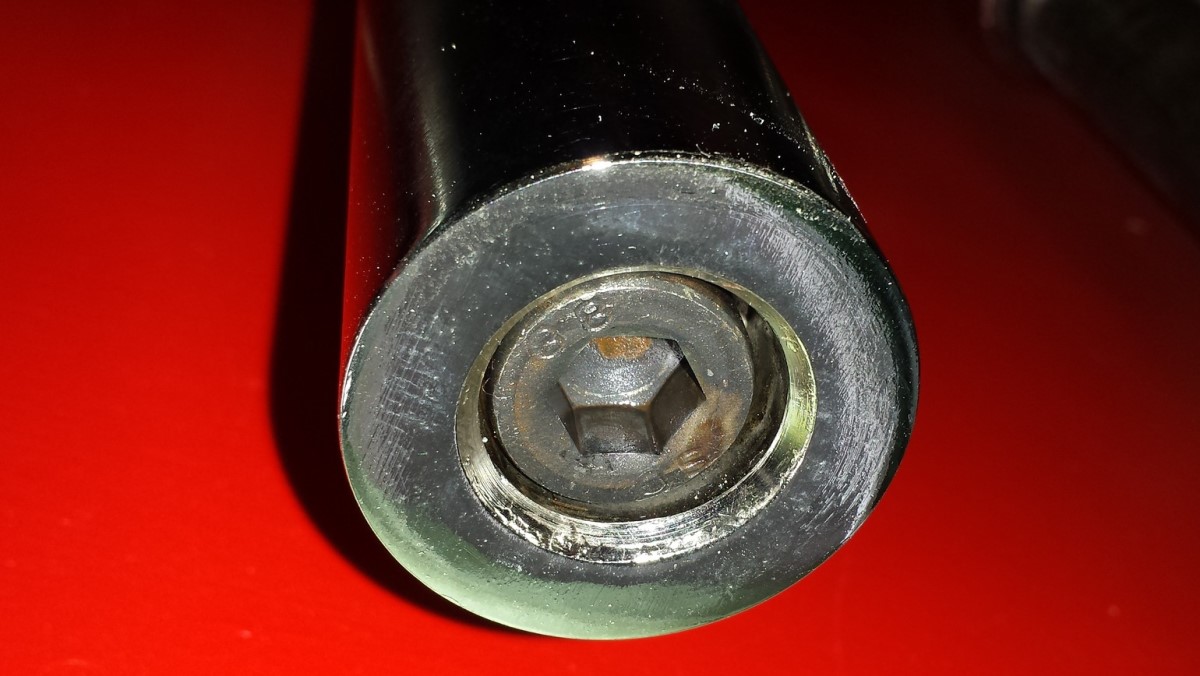
These bars can be found over the place, being used in home gyms across the country, shuffled around the used market, and rusting away in garages for a couple decades. They are not usually found in commercial gyms, or they shouldn’t be. They can get damaged easily under abuse by strong lifters, and for various reasons they don’t feel as good as a higher priced bar.
The typical 7ft bar in such a set weighs range of 35-45 lbs, most often close to 45 lbs. 45 lbs is what it’s supposed to be and usually what it is advertised as. Being that it’s a cheap bar that nobody is going to complain much about being off-weight, manufacturers don’t care that much about calibrating the weight.
A cheap 6ft bar will be in the range of 30-40 lbs.
A cheap 5ft bar will be in the range of 25-35 lbs.
This is in contrast to calibrated bars, which are precisely machined by cutting the length of part of the bar to ensure the weight comes out the same even if the length is a couple millimeters off. This of course requires an extra step and adds to the price of the bar, so calibrating is only done to higher end bars. See the Olympic Weightlifting Bars and Powerlifting Bars sections below for those.
Aluminum 6ft Bars
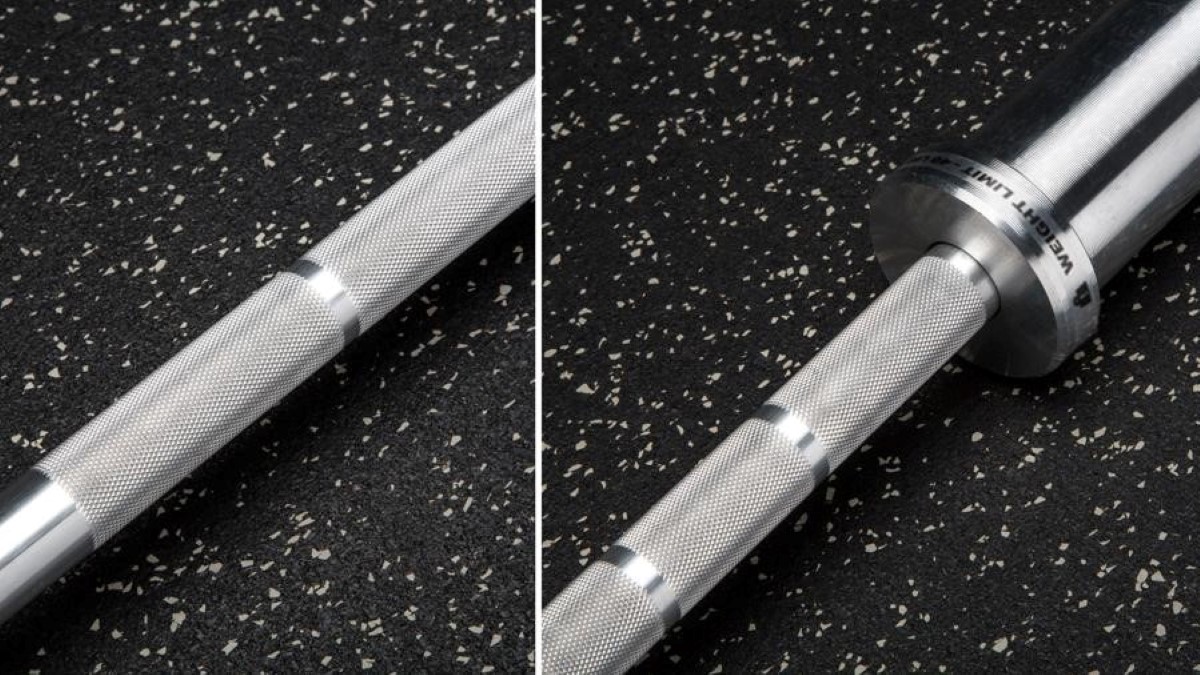
If your 6ft bar feels nowhere near 30 lbs, you could have a lightweight aluminum bar meant for training the olympic lifts (the snatch and the clean-and-jerk). They can also be handy for especially small or weak lifters who can’t handle a 30lb bar, at least not for their warmup sets, or who are using it on an olympic-width (48″) wide rack such as a bench press or power rack.
These weigh in the range of 10-20 lbs, most of them being 2.5kg / 11lb.
These are quite rare to just be floating around. Usually anyone buying one of these hangs onto it or sells it to someone else who is looking for this very thing.
Olympic Weightlifting Bars
This is a particular type of bar that is meant to conform to IWF specifications (see page 47 of the PDF).
The weight of an IWF-spec olympic weightlifting bar is 20kg. This is the international standard for the purpose of competitions. 20kg is the men’s bar and corresponds to 44 lbs.
A women’s bar that meets IWF specs is exactly 15kg or 33lb.
There is a tiny amount of room for variability in weight, but it isn’t much, because competitors depend on the bar being the stated weight, when grams/ounces make the difference between winning and losing, or making a new PR.
Powerlifting Bars
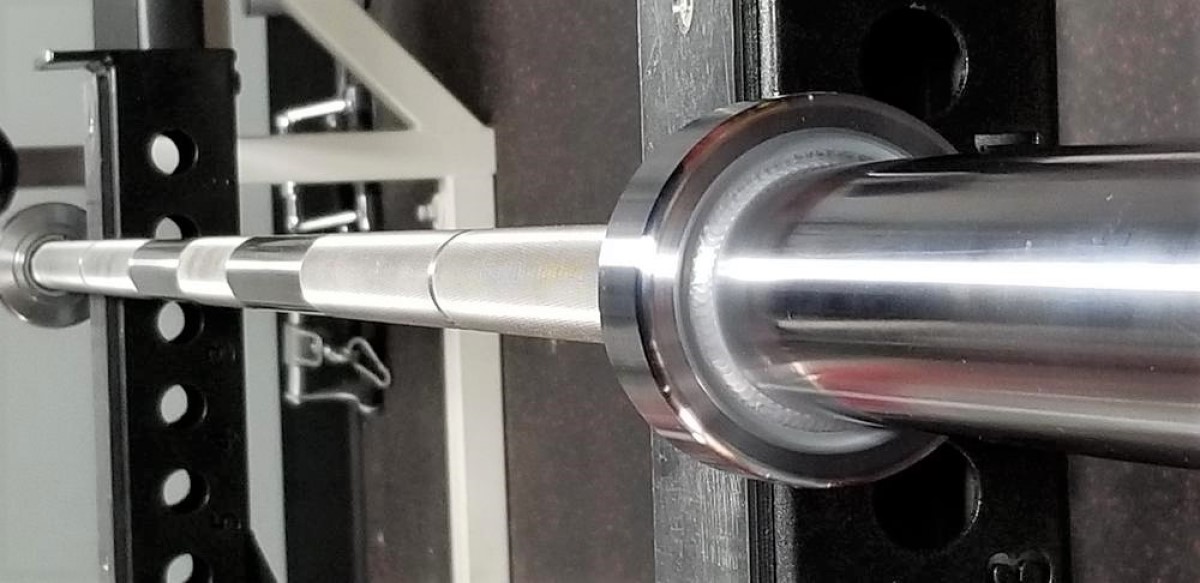
IPF specifications (see page 6 of the PDF) for powerlifting bars mandate that the weight of the bar plus the collars is 25kg. Normally the collars are 2.5kg each, so the bar is 20kg / 44lb.
That said, some expensive and widely used powerlifting bars are 45 lbs.
One way to identify a powerlifting bar is by the aggressive knurling cut into the bar. You won’t be able to slide your hand as comfortably along it, and squeezing it hard may be uncomfortable if you aren’t used to it. The knurling will grab your skin. This not always the case, but it’s generally a good giveaway.
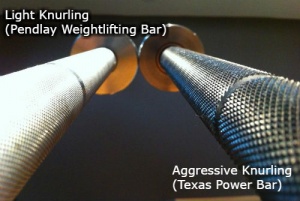
Unlike with weightlifting, powerlifting meets do not make use of women’s bars to fit their smaller hands. Women use the same bars as men.
Multipurpose Olympic Bars
Most bars out there are neither olympic weightlifting bars nor powerlifting bars, but something between the two. They look very similar at first glance anyway.
Nearly all of these medium-quality and high-quality bars weigh 44 or 45 lbs, including any around the $150-$200 price range as well as the $300 price range.
Other Shapes: Curl Bars, Tricep Bars, etc.
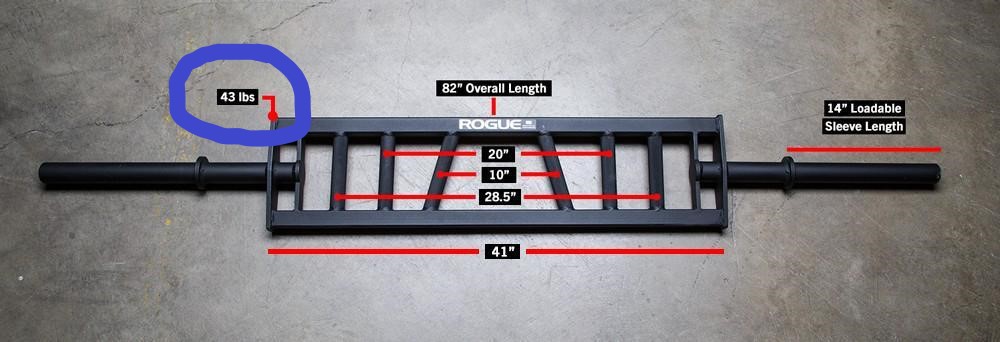
Specialty bars like curl bars, tricep bars, hex deadlift bars, and the multi grip bar above, can also weigh anything conceivable and are usually not designed to be any particular weight. They make the bar, figure out what it weighs, and make that model (hopefully) the same every time so it comes out to the same weight.
Standard Bars
These are by no definition olympic bars, but they are worth a mention for clarity.
Standard bars, or bars with 1″ diameter ends (the same diameter as the shaft you grip), are pretty variable. They aren’t used in competitions, so nobody really cares about consistency, and no organization has gone to the pointless trouble of creating any kind of specification for them. We’re just lucky they’re all pretty much the same size and fit the same plates.
There are hollow 5ft standard bars used for cardio barbell classes that weigh only 5 lbs.
A 5ft long solid standard bar, which is the smallest straight bar you are likely to find, will weigh at least 10 lbs.
A 7ft long solid standard bar will be somewhere around 20 lbs.
Some standard bars have large grooves on the ends to take spin-lock collars, while others have smooth ends. There isn’t much difference in weight between the two.
Now that you have a pretty good idea of how much the empty bar weighs, see Nerd Fitness’s article on how much weight you should be lifting in the beginning to stay safe and make progress.

